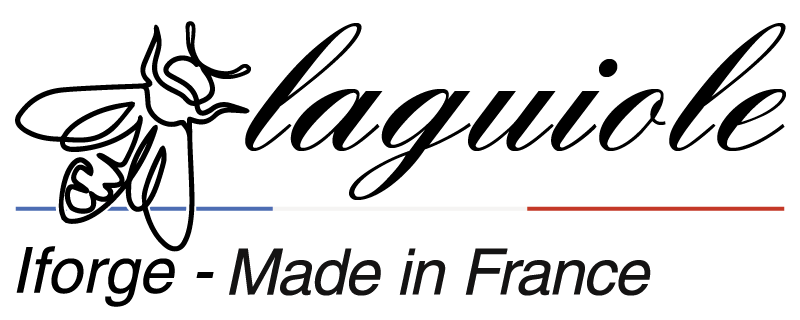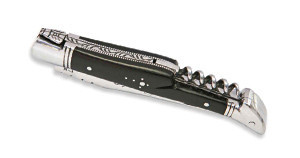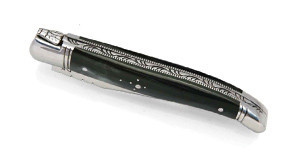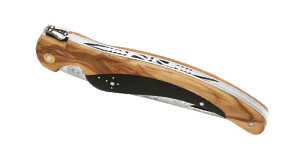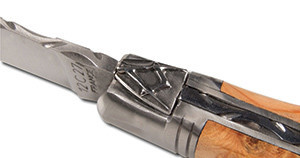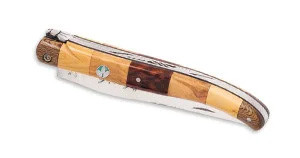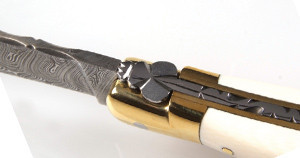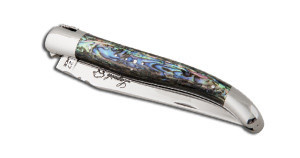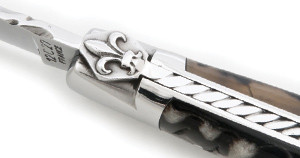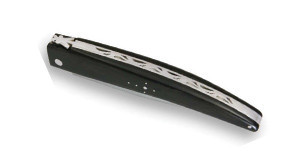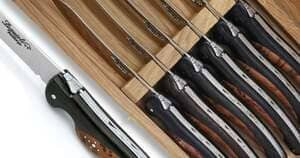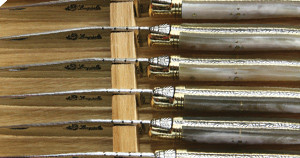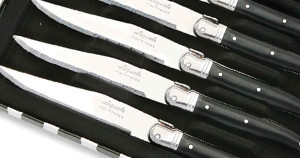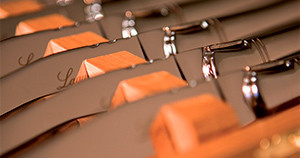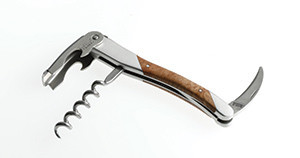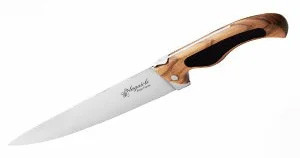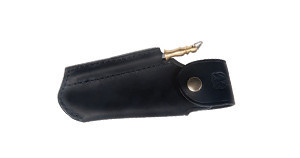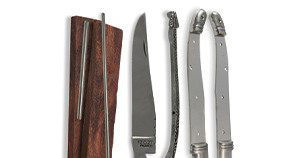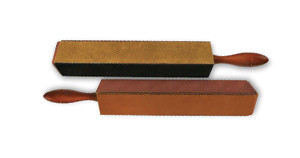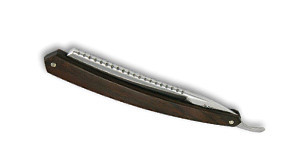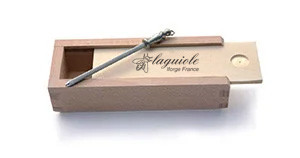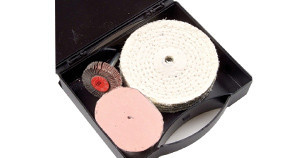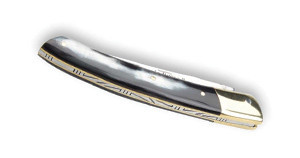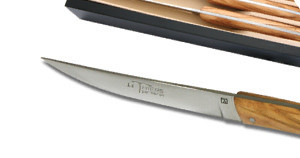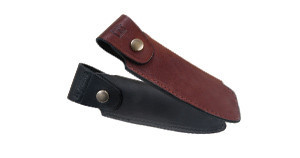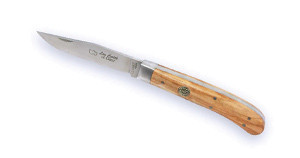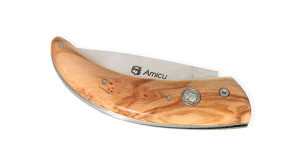Quick but important reminder : According to French tradition, the number of cutlery items set on the table canot exceed three sets, which means that the meal will consist of three dishes. Food-lovers might have to keep their appetites in check…

1) How should I set my cutlery?
Just follow this very simple rule : on each side of the plate, cutlery should be disposed in the order in which your guests will need to use it. Being the perfect host, you will therefore set the items which will be needed first furthest away from the plate.
Conversely, cutlery needed towards the end of the meal shall be placed closest to the plate.
Note: Always set your knives with the edges of the blades turned towards the plates.
On the use of knife rests : Only use them for meals with close friends, since their use imply that you do not intend to change your tablecloth after this lunch / dinner that you are sharing with your guests...
If you serve soup, set the spoon furthest away from the plate, on its right-hand side, as shown in the picture above. Then, arrange the fish cutlery (knife on the right-hand side and fork on the left), provided fish is on the menu, of course.
Finally, the cutlery for the main course (as usual, knife on the right, fork on the left).
1. Soup spoon
2. Cream dessert knife
3 Cream dessert fork
4. Fish knife
5. Fish fork
6. Regular knife
7. Regular fork
8. Regular plate
9. Bread knife
10. Bread plate
11. Butter holder
12. Dessert fork
13. Dessert spoon
14. Dessert wine glass
15. White wine glass
16. Red wine glass
17. Water glass
18. Salt and pepper shakers
''What about the cheese and dessert cutlery?''
Excellent question...
Two options for this strategic step of table setting:
• Are friends or family coming over? Then you may set these particular pieces of cutlery on the table from the beginning of the meal, above the plate, between the plate and the glasses. Keep the cheese knives' edges turned down, thank you very much.
• Have you invited your boss or clients? Then you need to bring these items at the same time as the cheese - and then dessert- themselves
Did you know?
According to the ever-helpful ''Service à la Française'' book, forks are laid on the table with their teeth pointing down. This particular etiquette rule dates back to the time when the crests of great families were engraved on the back of the forks.
As for everyone's favourite tea spoon, it does not belong on the table. We are proud of our traditions, which is why we eat dessert with a fork, including ice-cream (easier said than done, I agree...)
2) Should I leave the bread on the table?
''Bread on, elbows off!''
You may set a bread plate filled with your favourite baker's finest loaves.
If you want to spare your guests the hassle of cutting their bread and dealing with crumbs, you will set slices of bread in a bread basket which you will conveniently leave on your ancestor's kitchen trolley since it does not belong on the table.
It will then be up to you to offer bread to your guests all through the meal.
The Table is the epitome of relaxation and conviviality… That is why you should also use your imagination to complement the efforts made with the cooking. - Bernard Loiseau

3) Can I set anything else on my reception table?
The only pieces of crockery you should leave on the table are plates. Nothing else.
We will grant the more artistically minded among you permission to set a very large decorative dish, which shall remain empty, except for some flowers.
And please, keep your table mats for family reunions. Forget their very existence when hosting formal meals.

